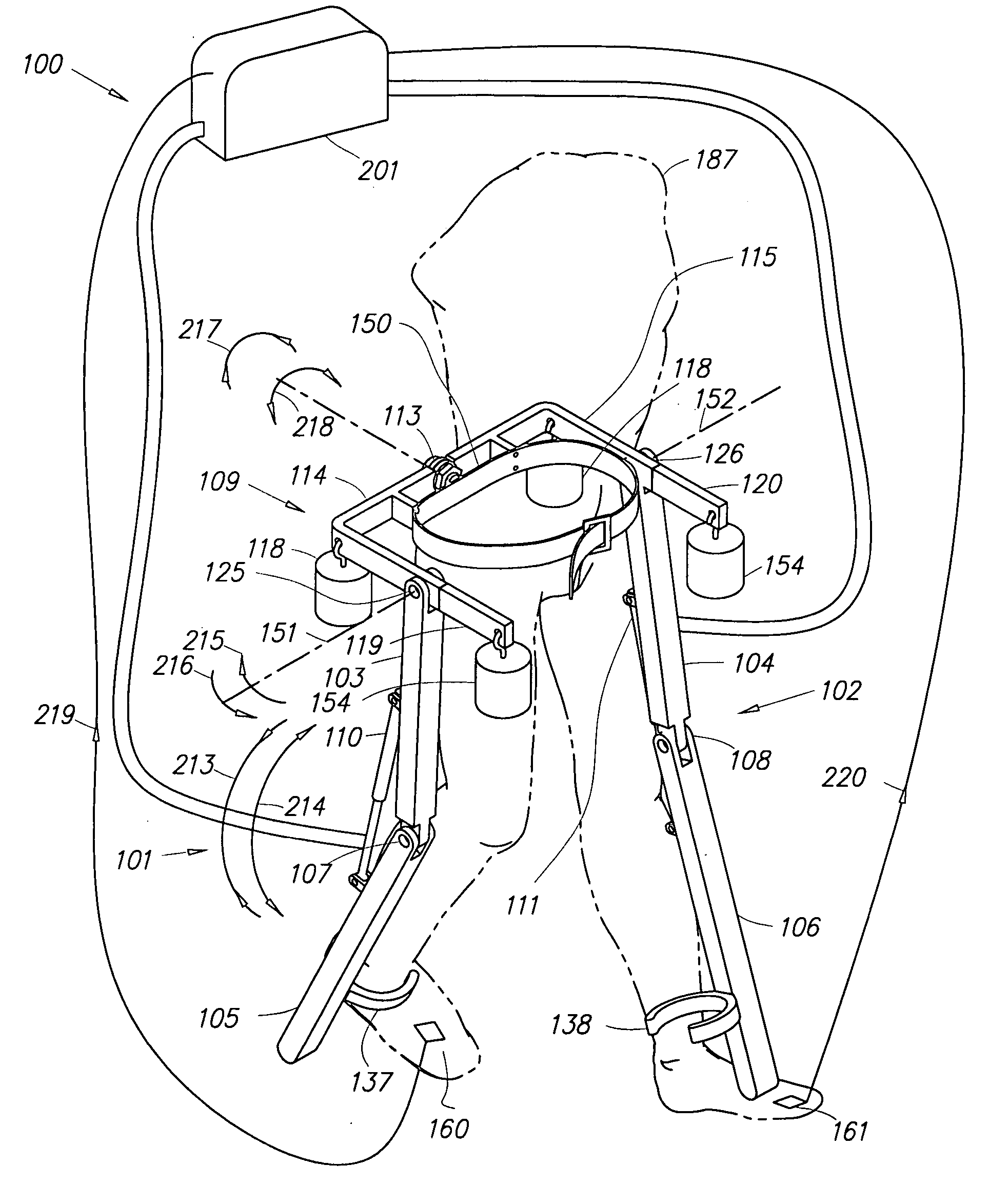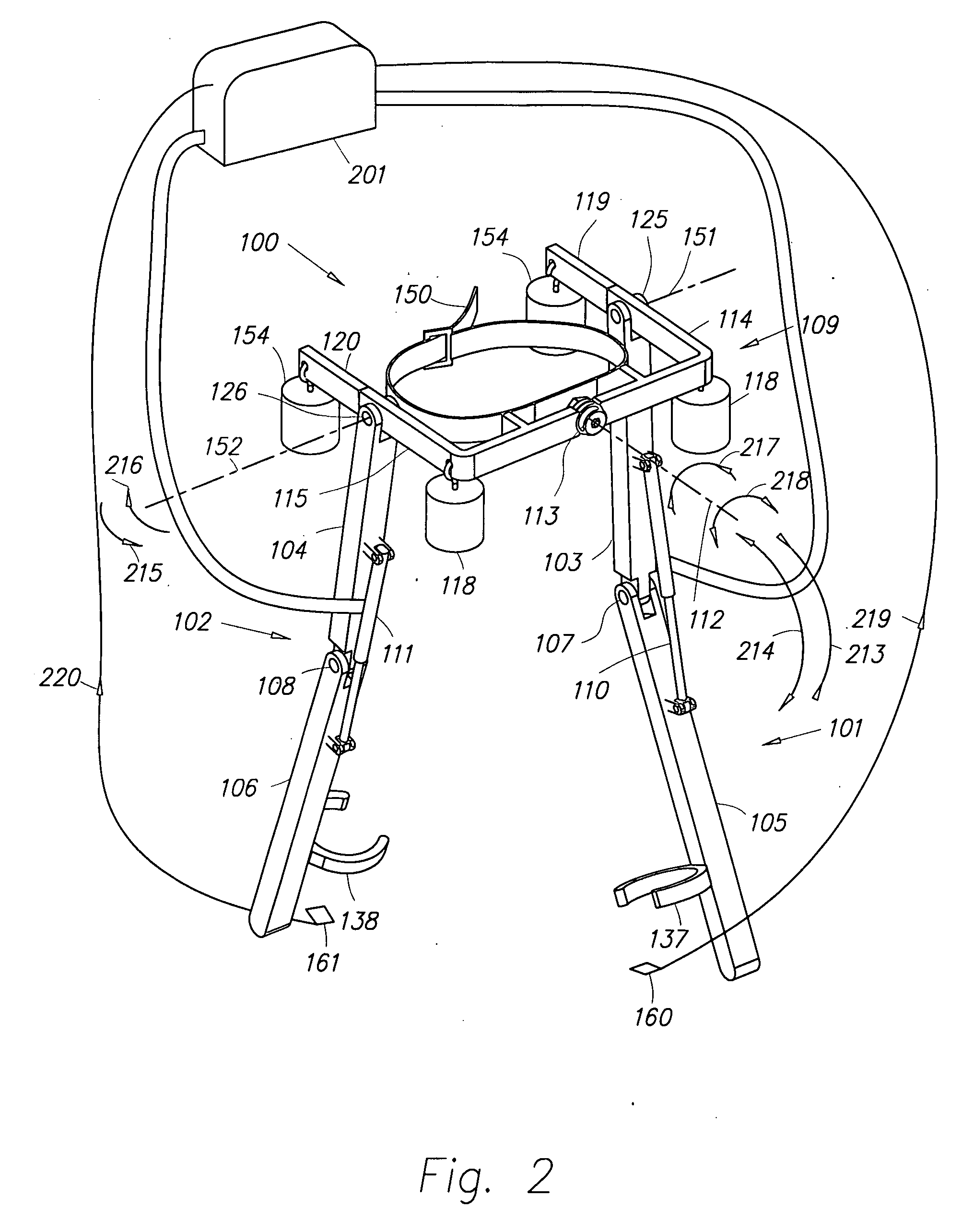Semi-powered lower extremity exoskeleton
a lower extremity and exoskeleton technology, applied in the field of lower extremity exoskeletons, can solve the problems of people of ordinary ability being frustrated in attempting to carry excessively heavy or bulky objects, and people cannot even carry their own weight, so as to achieve the effect of quickly tiredness or injury
- Summary
- Abstract
- Description
- Claims
- Application Information
AI Technical Summary
Benefits of technology
Problems solved by technology
Method used
Image
Examples
Embodiment Construction
[0045] In accordance with an embodiment of the present invention, FIG. 1 and FIG. 2 are perspective drawings illustrating a lower extremity exoskeleton 100 wearable by a person 187. Lower extremity exoskeleton 100 comprises two leg supports 101 and 102, which are configured to be connectable to the person's lower limbs and configured to rest on the ground during their stance phase. The leg supports comprise thigh links 103 and 104 and shank links 105 and 106. Two knee joints 107 and 108 are configured to allow flexion and extension between the shank and thigh of the leg supports (shown by arrows 213 and 214 respectively). Lower extremity exoskeleton 100 further comprises an exoskeleton trunk 109. Exoskeleton trunk 109, among other components, comprises a human interface device 150. Exoskeleton trunk 109 is configurable to be coupled to the person's upper body through human interface device 150. The person's upper body means any location above the thighs. Exoskeleton trunk 109 is rot...
PUM
 Login to View More
Login to View More Abstract
Description
Claims
Application Information
 Login to View More
Login to View More - R&D
- Intellectual Property
- Life Sciences
- Materials
- Tech Scout
- Unparalleled Data Quality
- Higher Quality Content
- 60% Fewer Hallucinations
Browse by: Latest US Patents, China's latest patents, Technical Efficacy Thesaurus, Application Domain, Technology Topic, Popular Technical Reports.
© 2025 PatSnap. All rights reserved.Legal|Privacy policy|Modern Slavery Act Transparency Statement|Sitemap|About US| Contact US: help@patsnap.com



